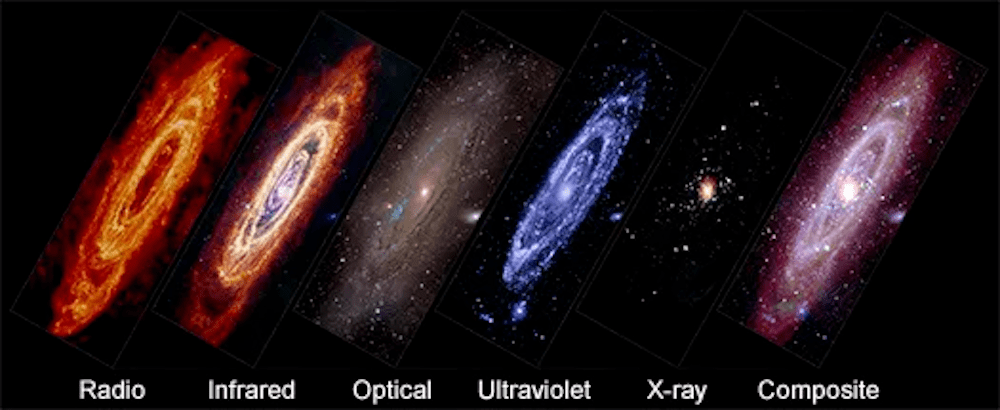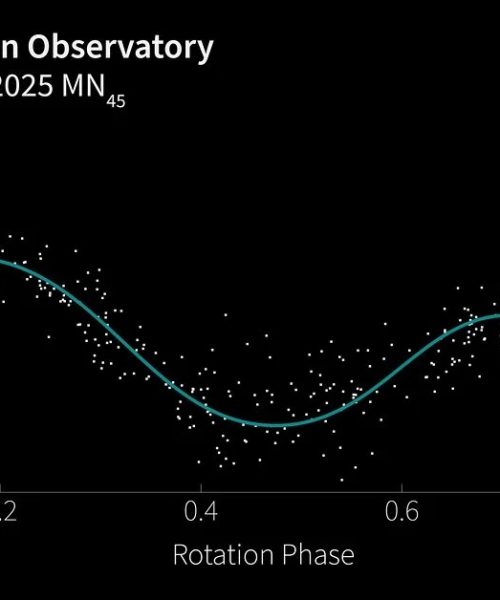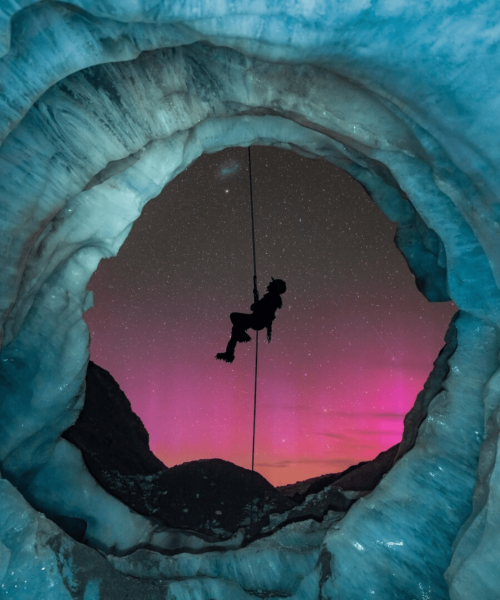Even a century after Edward Hubble confirmed its existence, astronomers learn new details about the Andromeda galaxy that help us better understand our cosmic neighborhood and the wider universe. Earlier this week, NASA released its latest detailed images of the Milky Way’s spiral sibling, as well an ethereal sonification of its energy wavelengths.
Attaining an outside view of the Milky Way galaxy is a bit like trying to examine the entire planet from your backyard—that is to say, it’s impossible from humanity’s current vantage point. The next best option for astronomers is gazing at similar nearby spiral galaxies, the closest of which is Messier 31. Also known as Andromeda, the Milky Way’s most immediate neighbor is about 2.5 million light-years away, and provides an excellent option for studying how spiral galaxies form and evolve over time. It’s also where a team led by astronomer Vera Rubin first detected the anomalous material now known as “dark matter” in the 1960s.

The newest glimpses at Andromeda are based on composite data collected by an international array of the world’s most powerful telescopes, including the Chandra X-ray Observatory, the ESA’s XMM-Newton, and even optical information from a pair of astrophotographers. The various kinds of light span the visible, infrared, radio, and ultraviolet wavelengths. When layered, they depict a vibrant and active galaxy reminiscent of our own—and the information is already helping experts expand on Andromeda’s ongoing life story.
“For example, Chandra’s X-rays reveal the high-energy radiation around the supermassive black hole at the center of M31 as well as many other smaller compact and dense objects strewn across the galaxy,” NASA explained in its announcement.
Astronomers aren’t limited to studying visual representations of Andromeda’s energy; they can also assess them through sound. In addition to the images, NASA researchers compiled the galaxy datasets into a sonification by separating out each wavelength, rotating them, and stacking them on top of one another in order of their frequency. From top to bottom, that means X-rays, ultraviolet, optical, infrared, and finally radio waves. These are next assigned a range of corresponding notes, with brightness designating volume while spectrum location determines pitch. The result is a dreamlink chorus of tones as the space telescopes traverse Andromeda’s 152,000 light-year diameter.
There’s still an untold wealth of information to learn from the Milky Way’s neighbor, possibly even the means to finally understand the dark matter first detected by Rubin. That’s at least what NASA hopes to achieve with the upcoming Nancy Grace Roman Space Telescope currently scheduled to go into operation in 2027.






